Token Creation on Bitcoin: BRC20 and Runes

In the ever-evolving realm of blockchain technology, the desire to create tokens on Bitcoin has gained significant momentum. As cryptocurrencies continue to reshape our financial landscape, the ability to issue and manage digital assets within the world's most recognized blockchain network has become a coveted goal. In this article, we embark on a journey to explore the various avenues available for token development on the Bitcoin blockchain, providing a comprehensive overview of current solutions, innovative proposals, and the increasing buzz around one groundbreaking concept: Runes.
The Quest for Token Creation on Bitcoin
Bitcoin, known as the first cryptocurrency, has primarily served as a digital store of value and a medium of exchange. While its security and immutability have earned it a place of prominence, the limitations of Bitcoin's scripting language initially hindered the creation of complex smart contracts and tokens. This led to the rise of alternative blockchain platforms like Ethereum, which provided a more flexible environment for development.
The Rise of BRC20 Tokens
One notable solution within the Bitcoin ecosystem is the BRC20 token standard. This framework, designed to align with Bitcoin's infrastructure, offers a bridge to token creation on the Bitcoin blockchain. BRC20 tokens bring their unique advantages, yet they also come with challenges that have sparked discussions about potential improvements.
The Intriguing Proposal of 'Runes'
However, the cryptocurrency community's collective gaze has recently turned toward an innovative proposal known as 'Runes.' Born from the mind behind Bitcoin Ordinals, 'Runes' is envisioned as an alternative approach to token development on the Bitcoin blockchain. The buzz surrounding Runes is growing steadily, as it promises to seamlessly integrate with Bitcoin while addressing the limitations of existing solutions.
A Growing Interest to Smart Contracts on Bitcoin
The concept of smart contracts on Bitcoin, exemplified by the Runes proposal, has ignited a spark of enthusiasm within the cryptocurrency community. The allure of leveraging Bitcoin's unmatched security and immutability for smart contracts and token creation has captured the imaginations of developers, crypto enthusiasts, and innovators. The journey to explore the potential of smart contracts on Bitcoin is just beginning, and it promises to open new horizons for the blockchain ecosystem.
In this article, we will dive deep into the current solutions for token development on the Bitcoin blockchain, explore the 'Runes' proposal in detail, and shed light on the growing interest and excitement surrounding smart contracts on Bitcoin. Join us as we navigate this dynamic landscape and uncover the possibilities that lie ahead for those seeking to create tokens on Bitcoin.
Introducing BRC-20 Tokens Development and Bitcoin Ordinals
In the ever-evolving realm of cryptocurrency, BRC20 tokens have emerged as a captivating innovation. To truly appreciate their significance, it is imperative to delve into the foundational technology that underlies them - Bitcoin Ordinals. This protocol introduces a novel approach to numbering satoshis, the smallest units of Bitcoin, and empowers users to augment these satoshis with additional data, a process aptly referred to as "inscription."
Bitcoin Ordinals
Bitcoin Ordinals is a novel method for embedding data into individual satoshis. Leveraging the principles of ordinal theory, which provides a systematic framework for logical ordering, each satoshi can be assigned a unique numerical identifier. This ingenious approach empowers developers to imprint diverse data types – ranging from images and videos to text – onto individual satoshis, thereby opening up a multitude of possibilities for innovative applications.
The advent of Ordinals has ushered in a new era of Bitcoin-native meme coins and NFTs development without the need for layer-2 solutions or alterations to the Bitcoin protocol. This transformative capability has ignited a wave of interest in leveraging the Bitcoin network for the secure and immutable storage of data, unveiling a wealth of untapped potential in this regard.
Inscriptions Explained
Inscriptions refer to the information that is integrated into satoshis via the Ordinals protocol. These pieces of data can take various forms, encompassing images, videos, audio files, text, and even entire applications. When it comes to BRC-20 tokens, they essentially consist of ordinal inscriptions that adhere to specific rules and specifications governing the creation and management of tokens.
UTXOs Explained
UTXO, short for Unspent Transaction Output, represents the unspent chunks of cryptocurrency received in previous transactions. Each UTXO is associated with a specific address and requires the owner's private key for spending. These unspent outputs enhance security, prevent double-spending, and contribute to the efficiency of blockchain networks. When you send cryptocurrency, you consume UTXOs as inputs and create new ones as outputs, often including change UTXOs sent back to yourself.
BRC20 Token Development Explained
BRC20 tokens leverage the Ordinals protocol, utilising JSON data as the building blocks for their development. This data serves as the cornerstone for creating BRC20 tokens, minting fresh tokens, and orchestrating token transfers. At its core, the BRC20 token standard relies on Ordinals inscriptions to facilitate these essential functions.
Deployment: Creating BRC-20 Tokens
BRC20 tokens are brought into existence through the deployment function, providing users with the capability to create their own tokens on Bitcoin network. During this process, crucial parameters that define the token's characteristics are set, laying the groundwork for its future utility.
BRC20 Minting: Issuing New Tokens
The minting function empowers developers to generate additional BRC20 tokens, effectively expanding the token supply. This process can be meticulously controlled, adhering to predefined rules and permissions that govern the issuance of new tokens.
BRC20Transfer: Peer-to-Peer Transactions
At the heart of any token's functionality lies its transfer capability. In the BRC20 standard, the transfer function enables users to seamlessly send and receive tokens. This functionality is the cornerstone of the token's utility, enabling its smooth circulation within the network.
Current State of BRC20 Token Standard
It is imperative to acknowledge that BRC20 token development is still in its formative stages. While these tokens hold immense promise, particularly within the Bitcoin ecosystem, it's essential to recognize that the user experience for deploying, minting, and transferring BRC20 tokens may not yet match the seamless nature of their ERC20 counterparts on the Ethereum network.
Comparing BRC20 and ERC20 Tokens Development
When delving to the realms of BRC20 token development and ERC20 token development, it becomes apparent that while they may share similar names, these tokens exist within entirely separate blockchain ecosystems, each characterised by its unique attributes.
Network Distinctions
BRC20 token development takes place within the Bitcoin network, whereas ERC20 token development is intrinsically tied to the Ethereum ecosystem. These network distinctions hold profound implications for the inherent capabilities and functionalities of each token type.
Smart Contracts and Creation
One of the most significant differences lies in the utilisation of smart contracts. ERC20 token development relies heavily on Ethereum's sophisticated smart contract platform, allowing developers to create ERC20 tokens with programmable features and the capacity to interact seamlessly with a wide array of protocols and applications. In contrast, BRC20 tokens creation takes a different path. They utilise on smart contracts principles relying on Ordinals protocol, while not based on smart contracts. It presents a more straightforward approach to token operations. This distinction results in BRC20 tokens having a streamlined functionality.
Maturity and Adoption
The ERC20 token standard has held its ground since its inception in 2015, boasting extensive adoption and a diverse range of practical use cases. These tokens have undergone rigorous testing and are widely recognized as mature entities within the blockchain technology landscape. In contrast, BRC20 tokens represent a relatively new entrant, facing the challenge of navigating the uncertainties surrounding their future development and adoption.

In summary, BRC20 token development offers a unique perspective on token creation, leveraging the innovative potential of the Bitcoin Ordinals protocol. Its notable departure from smart contracts underscores its straightforward approach to token creation, setting it apart within the blockchain landscape. While BRC20 tokens differ significantly from their ERC20 counterparts in terms of functionality and maturity, they showcase a promising horizon of innovation and expansion within the Bitcoin network. As the cryptocurrency landscape evolves, with the emergence of novel tools and services, both BRC20 and ERC20 tokens are poised to continue making their mark in the ever-changing world of blockchain technology.
Addressing the Challenges of the BRC20 Token Standard
The BRC20 token standard, while promising, is not without its fair share of challenges. This emerging token standard within the Bitcoin ecosystem introduces innovative ways to create and manage digital assets, but it also faces several hurdles that need to be overcome for widespread adoption and success.
Complexity of Inscriptions and impact on Blockchain Efficiency
BRC20 tokens rely on a mechanism called "Inscriptions" to encode token data on the blockchain. While this approach offers versatility, it also introduces complexity. Each operation involving BRC20 tokens, such as issuing, transferring, or setting up smart contracts, requires multiple transactions. This can lead to the generation of numerous unspent transaction outputs (UTXOs), potentially cluttering the blockchain and affecting scalability.
The proliferation of UTXOs due to BRC-20 tokens has implications for the efficiency and management of the Bitcoin blockchain. UTXOs represent specific amounts of authorised cryptocurrency for spending. The increase in UTXOs adds complexity to the network's processing, making it crucial to address this challenge for smoother blockchain operation.
Inscription Numbering
BRC20 tokens must reference prior inscriptions to establish a coherent transaction history that can be verified. However, issues related to inscription numbering have arisen, leading to debates within the Ordinals community about how to handle indexing errors. These challenges make it crucial to find effective solutions to ensure the stability and accuracy of inscription numbering. These inscription numbering complexities also impact the efficiency of managing historical data for BRC-20 tokens, as errors can lead to inaccuracies and data integrity issues.
User-Friendliness
The process of creating BRC20 tokens, deploying, minting, and transferring may not be as user-friendly as their counterparts on other blockchain networks. This can deter users and developers from adopting BRC20 tokens and hinder their broader adoption.
Limited Tooling and Services
Unlike more mature token standards, such as ERC20 on Ethereum, the BRC20 ecosystem currently lacks a comprehensive set of tools and supporting services. This limitation can make it challenging for users and developers to work with BRC20 tokens efficiently.
Long-Term Stability
Users were cautioned from the beginning that the inscription numbering scheme might not guarantee long-term stability. This introduces uncertainty about the future of BRC20 tokens and the need for ongoing exploration of further enhancements.
Despite these challenges, the BRC20 token standard continues to evolve. Developers and the cryptocurrency community are actively exploring solutions to streamline processes, enhance user experience, and address technical issues while considering the impact on blockchain efficiency. As the ecosystem matures, BRC20 tokens hold the potential to become a valuable asset class within the Bitcoin network, provided these challenges are met with innovative solutions and continuous development efforts.
Explaining Runes - A Potential Solution to Bitcoin BRC20 Token Challenges
In the dynamic realm of blockchain technology, innovation is a constant driving force. Recently, the inventor of Bitcoin Ordinals, a notable figure in the crypto space, has proposed Runes as an alternative to the existing BRC-20 token standard—an idea that could potentially address some of the current challenges associated with token development on the Bitcoin network.
Seamless Integration with Bitcoin
At its core, Runes is a concept meticulously designed to seamlessly integrate with Bitcoin's infrastructure, presenting a range of significant advantages. This alignment with Bitcoin's framework holds immense promise, aiming to revolutionise the cryptocurrency landscape.
Tackling UTXO Challenges
One of the primary goals of Runes is to tackle the issue of excessive UTXO creation. This approach prioritises the reduction of unnecessary UTXOs, a factor that can greatly enhance the overall efficiency of the Bitcoin network. The brain behind Runes, Rodarmor, underscores the potential for this innovative protocol to maintain a minimal on-chain footprint, fostering responsible UTXO management—an approach that resonates with Bitcoin's core principles of efficiency and sustainability.
Versatile Runes Balances
A notable feature of Runes lies in its ability to accommodate Runes balances within UTXOs of varying denominations. This versatility allows Rune balances to coexist harmoniously within UTXOs, regardless of the quantity they represent. Moreover, Runes introduces a novel mechanism where Runes used in transactions with invalid protocol messages are intentionally "burned." This feature not only encourages responsible token management but also lays the groundwork for future upgrades to redefine how Runes are assigned or created by older clients.
Efficiency and Accountability
Compared to existing token protocols, this innovative approach could potentially promote more efficient and accountable token management, ultimately reducing potential harm. A core objective of the Runes model is to uphold Bitcoin's fundamental principles of auditability and transparency, effectively resolving issues like the double-spending problem.
Looking Ahead
In his vision, a thoughtfully crafted protocol has the potential to not only attract substantial transaction fee revenue but also capture the attention of developers and expand the user base of Bitcoin itself. It's worth noting that this concept is still in its infancy, and there's no confirmation that it will be built. However, the Bitcoin Frontier Fund has taken an exciting step by opening a $100,000 grant for prospective developers who can bring a Rune application to life.
Alternative Solutions for Token Creation on Bitcoin: Exploring Smart Contract Platforms
In the quest to harness the unparalleled security and immutability of the Bitcoin blockchain for token creation, a fascinating journey unfolds. For those seeking to create tokens on the Bitcoin blockchain, a world of possibilities has emerged through the development of smart contract platforms built on top of Bitcoin itself. While Bitcoin's scripting language was originally designed with a focus on security and simplicity, its limitations in supporting programmable smart contracts led to the rise of alternative blockchain platforms like Ethereum.
Using Bitcoin Layer 2 Solutions For Token Creation on Bitcoin
The desire to tap into the robust foundations of the Bitcoin network for smart contracts remained a significant goal. Enter the era of Bitcoin Layer 2 solutions—off-chain scaling solutions that have introduced the exciting realm of smart contract capabilities while staying firmly connected to the Bitcoin blockchain.
Rootstock (RSK): Bridging Bitcoin and Smart Contracts
Rootstock (RSK) stands as a prominent example of a smart contract development platform that operates as a sidechain to Bitcoin. RSK extends Bitcoin's capabilities by enabling the execution of smart contracts. This integration has paved the way for developers to create token smart contracts, known as RRC20 tokens, on the RSK network, utilising Bitcoin as the underlying asset.
The Lightning Network: Enabling Lightning-Fast Smart Contracts
The Lightning Network, another Layer 2 solution for Bitcoin, is primarily known for its capacity to facilitate rapid and low-cost Bitcoin transactions. However, it also introduces the potential for creating simple smart contracts, such as payment channels. While not as feature-rich as Ethereum's smart contract capabilities, the Lightning Network showcases Bitcoin's versatility.
Token Creation on Bitcoin
Token creation on Bitcoin-based smart contract platforms typically follows well-defined standards. For instance, RRC20 tokens on RSK are analogous to Ethereum's ERC-20 tokens, offering fungibility, divisibility, and compatibility with various wallets and exchanges. These tokens can represent various assets, from digital collectibles to utility tokens, all anchored to Bitcoin's robust security.
Your Token Creation Journey with Rock'n'Block
As we conclude this exploration of the multifaceted world of token creation on the Bitcoin blockchain, one thing remains abundantly clear: innovation in the blockchain space knows no bounds. Whether you choose to embark on the path of BRC20 tokens, explore the intriguing 'Runes' proposal, or leverage the capabilities of Layer 2 solutions, your journey into the realm of digital assets is filled with exciting opportunities.
At Rock'n'Block, we understand that navigating the complexities of token creation and smart contracts can be both thrilling and challenging. That's why we are here to offer our unwavering support and expertise. Our blockchain development company specialises in providing turnkey token creation services, ensuring that your venture into the world of blockchain is seamless and successful.
No matter which approach you decide to move forward with, you can trust Rock'n'Block to be your partner in bringing your token creation ideas to life. Our commitment to excellence and our passion for blockchain technology make us the ideal ally on your journey to tokenize the future. Contact us today, and let's embark on this exciting adventure together. Your tokens, your vision, and your success—we're here to make it happen.
We ❤️ Development
Rock⚡️Block
Follow us on social media to receive the hottest blockchain development updates
Crunchbase ⚡️Twitter ⚡️Telegram⚡️LinkedIn⚡️Facebook













%201.webp)



